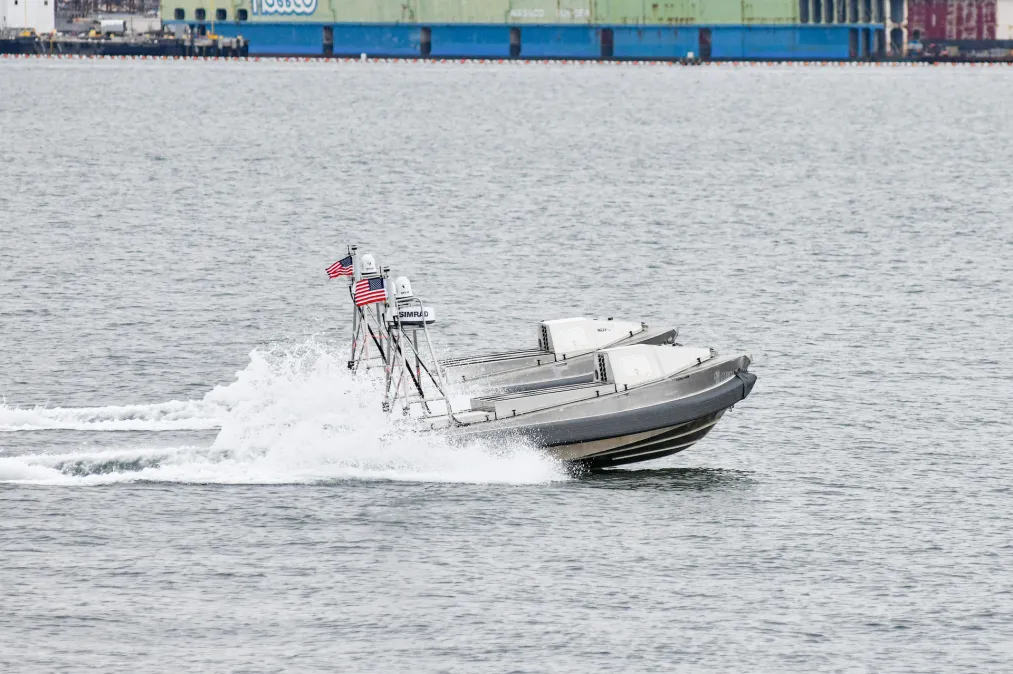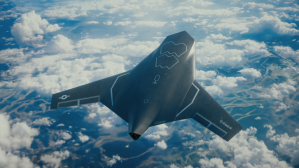Navy stands up new robo-ship squadron as Pentagon pursues Replicator systems

The Navy has a new unit aimed at helping the service integrate small maritime drones into its forces.
Unmanned Surface Vessel Squadron Three, which was stood up May 17 at Naval Base San Diego and put under the command of Capt. Derek Rader, will oversee a “fleet” of small uncrewed surface vessels, including Global Autonomous Reconnaissance Craft (GARC) built by Maritime Applied Physics Corp., according to a release.
The establishment of USVRON Three is the latest move in the sea service’s journey to build a so-called hybrid fleet of manned and unmanned systems. It came about three months after Adm. Lisa Franchetti, the chief of naval operations, established a new “robotics warfare specialist” general rating.
“RW Sailors will enable Robotic and Autonomous System (RAS) operations and maintenance at the tactical edge. RWs will be the subject matter experts for computer vision, mission autonomy, navigation autonomy, data systems, artificial intelligence and machine learning on our RAS platforms,” according to a NAVADMIN announcement from Franchetti.
Those experts will be part of the new squadron, according to the service.
“The Navy is placing unmanned systems in the hands of 400 of our most talented warfighters to help integrate, scale, experiment, and employ these systems,” Vice Adm. Brendan McLane, commander of Naval Surface Forces U.S. Pacific Fleet, said during a speech at the May 17 ceremony to mark the establishment of USVRON Three.
The new squadron came about as the Pentagon pushes ahead with its Replicator initiative, which aims to accelerate programs and field thousands of “attritable autonomous” systems across multiple domains by August 2025 to help the U.S. armed forces counter China’s military buildup. The Pentagon has secured $500 million in funding for the first tranche in fiscal 2024 and has requested an additional $500 million for fiscal 2025. Additional tranches are being planned.
The Navy is pursuing multiple types of unmanned surface vessels via Replicator, including through a partnership with the Defense Innovation Unit. DIU earlier this year issued a solicitation for small, autonomous maritime drones that can operate in packs to monitor and engage adversaries’ ships.
During a congressional hearing last week, Nickolas Guertin, the acquisition chief for the Department of the Navy, said the DON is supportive of Replicator, but he also noted that it’s not just a matter of scaling production.
“One other aspect to that is when we’re looking at these kinds of initiatives, we want to make sure we carry forward the sustainability and support work to make sure that our … [service members] can actually use this stuff in a reliable way when they need to in a fight,” he told lawmakers.
Other officials have also noted that the military needs to flesh out the tactics, techniques, procedures (TTPs) and training for how it will employ next-generation uncrewed systems.
Although the Navy’s release last week about USVRON Three did not explicitly mention Replicator or connect the unit to that effort, it appears that its future work could facilitate the integration of those types of systems into the fleet.
“The mission of USVRON Three is to deliver the most formidable, unmanned platforms in the maritime domain. The squadron will be a cornerstone in building the foundational knowledge required to operate and maintain sUSV and will spearhead the development of TTPs for sUSV operations and sustainment,” per the release.






